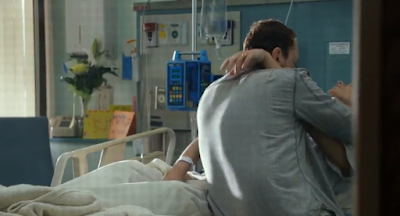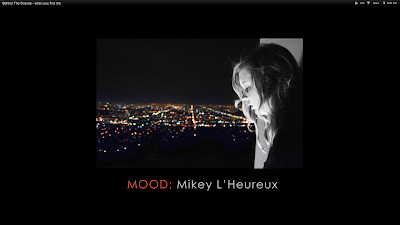Mood
Ron Howard defines mood as something conveying atmosphere, tone, or emotion. This could be elaborated into an image that has a deeper emotional meaning, or an image that gives off the feel of an emotional setting or situation. An example picture for this theme would possibly be this photograph by Kimberly M. I believe this photo conveys mood by engaging in an emotional connection with the baby and the father. What I absorb from this photo is the feeling of amazement from the baby's facial expression. One could feel calm and at peace because of the mood that the blue lighting conveys. From what I've gathered, it appears that pictures that convey mood are taken with long lenses zoomed to extreme close ups with selective focus on subtle, but important details. However mood images can also be conveyed through the use of wide shots, taking vague yet expressive photos of a certain landscape or event.
Character

The theme of character focuses on a certain person or subject in the image. One should be able to understand a few characteristics about the subject just by looking at the image. For example, in this photo by Laresa R, the obvious character is the girl with her notebook. What we can tell about her character is that she is probably an artist, because of the pastels by her side. She could possibly be using art as an escape from reality considering the image is in black and white. Character photos essentially focus on a single subject, that range from long shots to extreme close ups.
Setting

Setting describes the time and location in an image. Here we have a photo of an alluring and isolated home in Norway, taken by Justin L. What we can tell about this photo is that the house is very welcoming and inviting due to the high key lighting. The lighting makes it appear as if the house was a gift from the heavens in the middle of nowhere. Its placement among many trees suggests it's like a haven far from danger. To set setting, one would probably take long shots with a wide lens to capture much of the environment. The camera is usually either eye level or at a higher angle to keep a sense of reality in the photos. The lighting would depend on the context of the photo. Like in this example, the lighting is high-key to suggest a pleasing and delighting setting, whereas one would use low-key lighting for darker, melancholic settings.
Obstacle

Obstacle represents anything in the way of the character from accomplishing anything. In this case, we have elderly disabled people climbing several sets of stairs. The depth of this image makes the obstacle (the stairs) seem menacing and nearly impossible for our characters to surpass. The usage of the z-axis to magnify depth plays an emotional, threatening role in this photo. Obstacle shots can really vary based on the context of the photo. Most obstacles images are extreme close ups on the obstacle itself. Sometimes the obstacles are also wide shots if the obstacle is something present in the background.
Backstory
Ron Howard's definition of backstory is a history that promotes fuller understanding of the narrative. Being that these are the 10 themes of storytelling, there has to be some backstory or context to each photo. Each image needs to have the potential to describe historical or previous events that are necessary to understanding the current situation of the image. In this photo by Michiale S, we can assume the location has a romantic backstory between a couple, as given to us by the two roses attached to the bench. The purple hue of the coastline provides a calm and loving mood in the image. Backstory images are often wide shots of large settings in deep focus, so one could identify the individual details that help tell the backstory.
Relationship
Relationships exist between any two things. Images that show relationship often have emotional meaning and intimacy connected to them. In this picture by Raine A, her infant is seen with a sleeping sea turtle. The relationship between the two is one of innocence and adorableness. The image was also taken in Hawaii, and superstition exists surrounding the blessing of turtle spirits and other nature entities. Relationship shots are often framed with two subjects, either close-up or long shot.
Goal
Goal represents something that the character strives for. When a character has a goal, the image should present the obstacle or route of action that the character must take to reach this goal. In Melissa A's picture, we see a child facing a mini-golf hole. Upon accomplishing this obstacle, he can reach his goal of surpassing the golf course. Goals should seem to be distant, and require effort to reach. This photo was taken at a high angle, to make the child seem inferior and outmatched against this hole. The graphic vector of the course causes our eyes to look towards the end of the course and emphasize the distance from our character's goal.
The Unknown
I'm not sure if I even want to know what's going on here. The Unknown is described as anything unexpected, or a twist. This photo is definitely a big twist from what many would expect. The possibility of a goat+pig hybrid would definitely turn heads. Aside the comedic intentions of this photo, the unknown can be a surprising and sometimes beautiful aspect. Unknown photos are often wide shots of a vague event or situation describing said unexpected twist.
Time
Time photos represent a time or day within history. These photos can be very vast in terms of technique in recording an image, considering any photo can be a time photo given a certain concept. This photo has the context of a period of time when gasoline was cheaper than nowadays. We understand this through the rustic and antique look of the gas pump. This conveys the element of time into the picture because we in our modern day would reflect onto times like this, awakening an emotional reaction within the viewer.

























